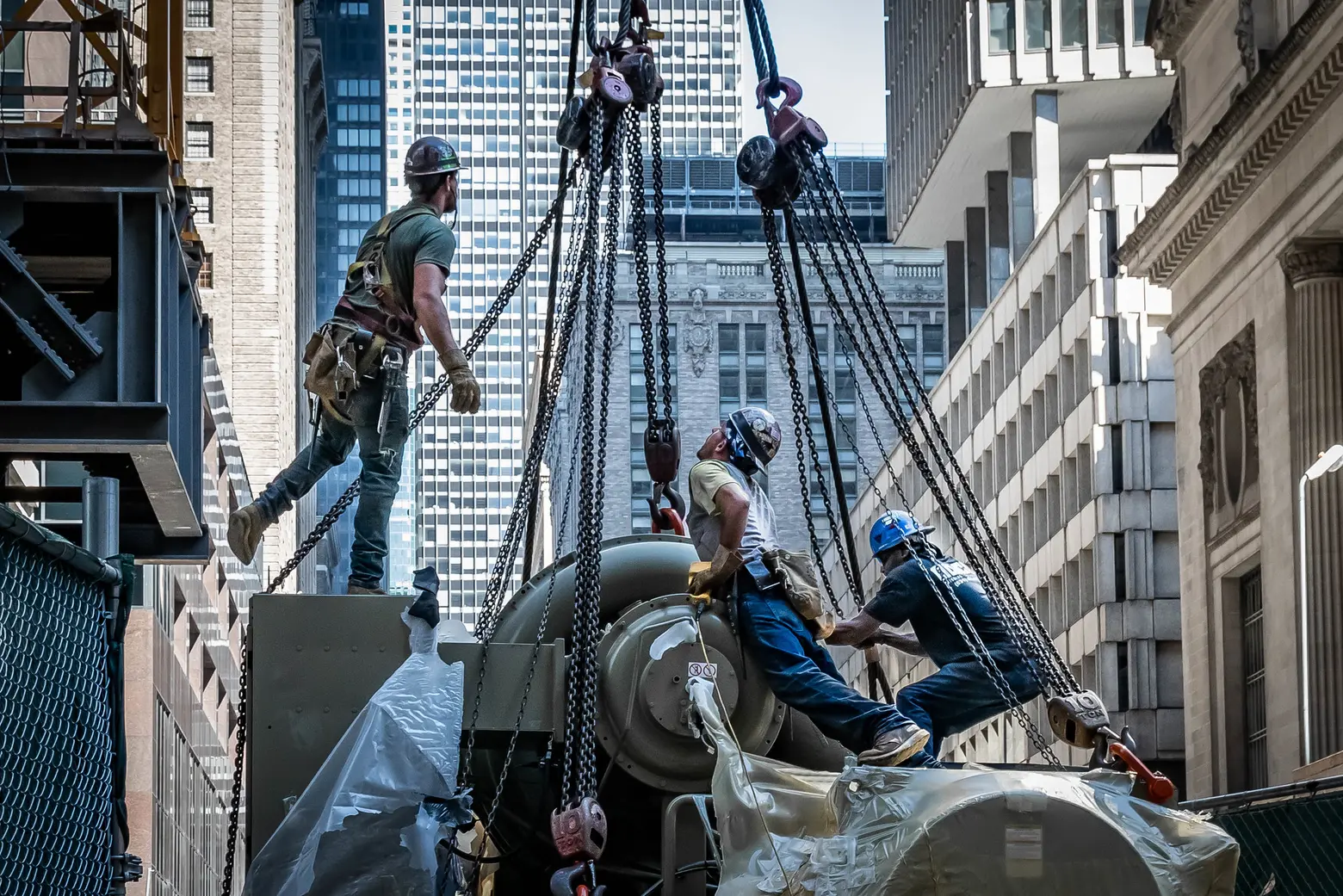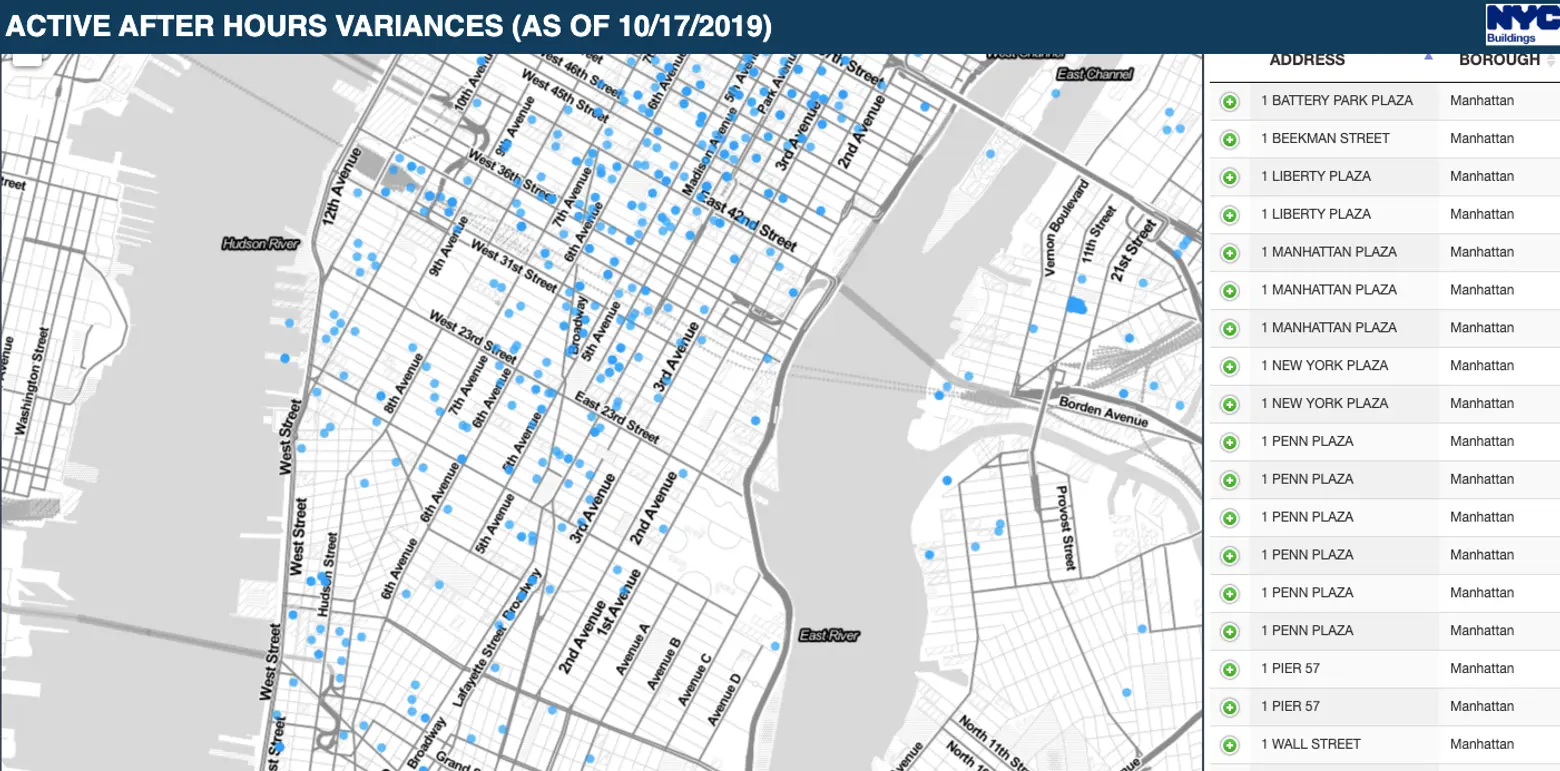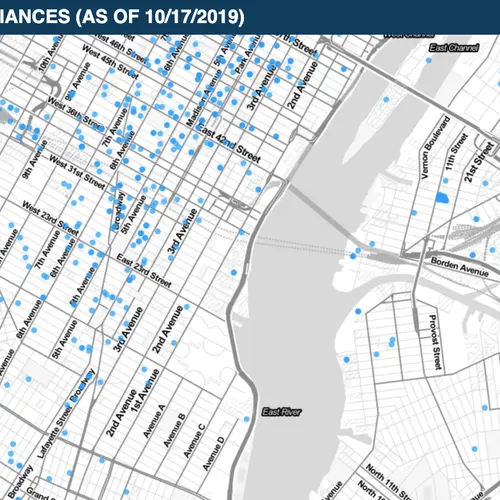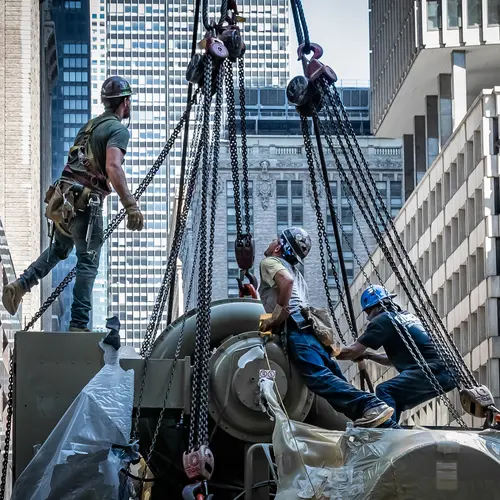DOB releases new, interactive map tracking after-hours construction permits throughout the city

Photo by Doug Davey via Flickr cc
The City’s Department of Buildings has just released a new, interactive map that shows the location of all building construction projects that have been granted permits to proceed with work outside of normal business hours. These types of permits, known as an after-hours variance (AHV), apply to work taking place before 7 a.m., after 6 p.m., or anytime during the weekend. The DOB issued 18,866 AHV permits in 2018 and received 3,729 public complaints through the 311 system regarding construction work illegally performed after hours. The map will be updated daily and include links to further information about each project so that tenants have a way of confirming the status of construction projects on their block.

Screenshot of Active AHVs Map; courtesy of the Department of Buildings
“This is a new powerful tool that will allow for greater transparency into construction across New York City by allowing New Yorkers the ability to see if construction sites have the proper permits to work after hours,” said Deputy Mayor Laura Anglin. “This sort of transparency gives New Yorkers up-to-date details on construction in their neighborhood, allowing them to report violations in real-time.”
“When the City adopts real-time models to track performance, it not only makes government more responsive to public concerns, it also fosters a culture of accountability,” added Brooklyn Borough President Eric L. Adams.
In addition to the release of this public real-time map, the Department will also be issuing weekly reports on AHV permits to local elected officials and community boards citywide. These initiatives in transparency come less than a month after Councilwoman Carlina Rivera introduced a bill to crack down on construction outside normal business hours, as Crain’s reported. The bill seeks to limit construction between 6 a.m. and 10 p.m. and 8 a.m. to 6 p.m. on weekends while capping builder’s after-hours variances to three during the week and one on weekends.
RELATED:































